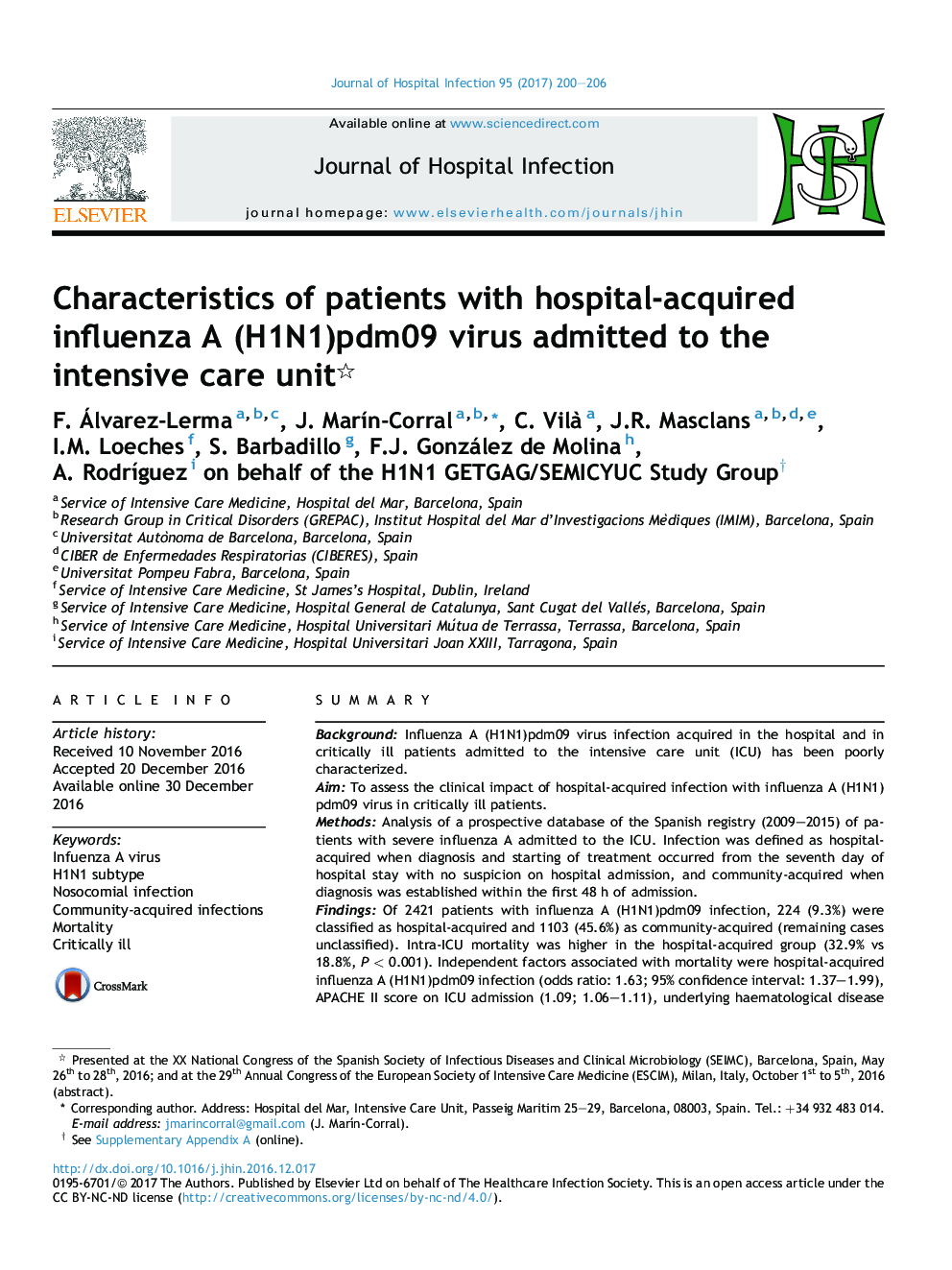| Article ID | Journal | Published Year | Pages | File Type |
|---|---|---|---|---|
| 5668399 | Journal of Hospital Infection | 2017 | 7 Pages |
SummaryBackgroundInfluenza A (H1N1)pdm09 virus infection acquired in the hospital and in critically ill patients admitted to the intensive care unit (ICU) has been poorly characterized.AimTo assess the clinical impact of hospital-acquired infection with influenza A (H1N1)pdm09 virus in critically ill patients.MethodsAnalysis of a prospective database of the Spanish registry (2009-2015) of patients with severe influenza A admitted to the ICU. Infection was defined as hospital-acquired when diagnosis and starting of treatment occurred from the seventh day of hospital stay with no suspicion on hospital admission, and community-acquired when diagnosis was established within the first 48Â h of admission.FindingsOf 2421 patients with influenza A (H1N1)pdm09 infection, 224 (9.3%) were classified as hospital-acquired and 1103 (45.6%) as community-acquired (remaining cases unclassified). Intra-ICU mortality was higher in the hospital-acquired group (32.9% vs 18.8%, P < 0.001). Independent factors associated with mortality were hospital-acquired influenza A (H1N1)pdm09 infection (odds ratio: 1.63; 95% confidence interval: 1.37-1.99), APACHE II score on ICU admission (1.09; 1.06-1.11), underlying haematological disease (3.19; 1.78-5.73), and need of extrarenal depuration techniques (4.20; 2.61-6.77) and mechanical ventilation (4.34; 2.62-7.21).ConclusionInfluenza A (H1N1)pdm09 infection acquired in the hospital is an independent factor for death in critically ill patients admitted to the ICU.
